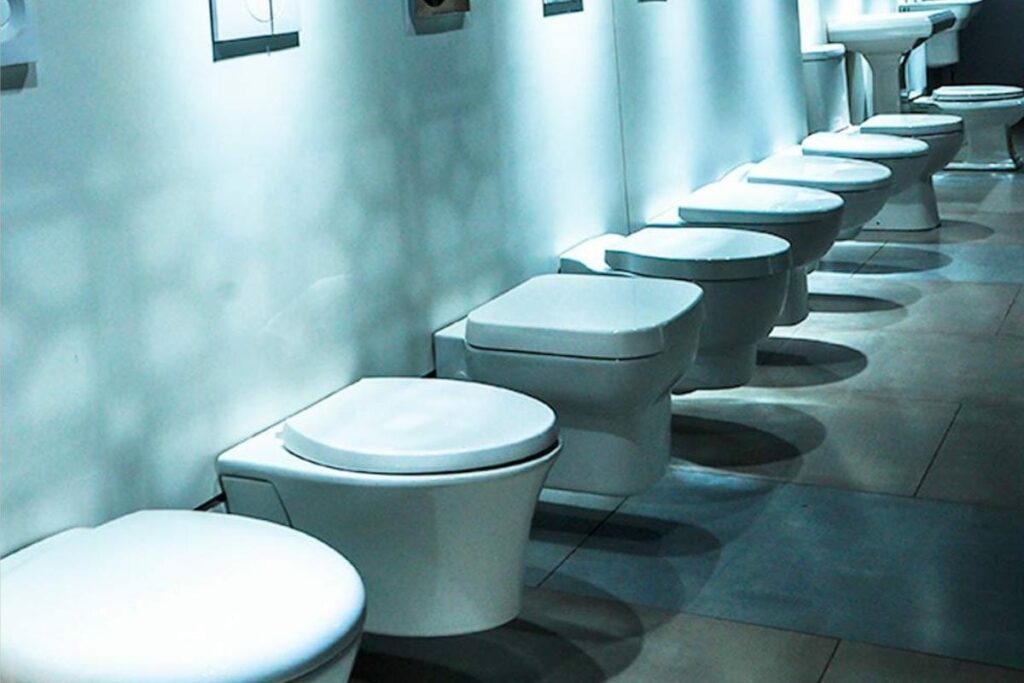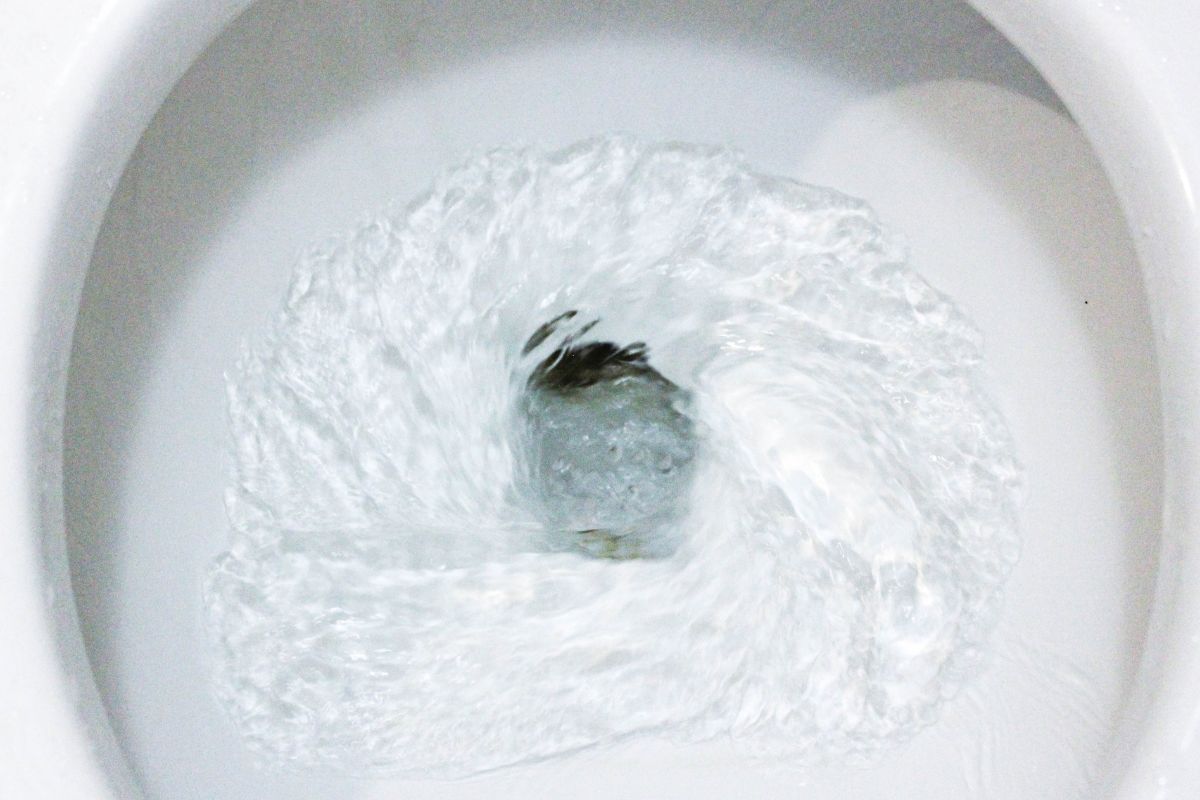When you fill up a sink with water or flush a toilet, water will rotate as it goes down the drain. Today, I will cover whether toilets in different hemispheres flush in different directions.
Toilets do flush in different directions in the northern and southern hemispheres. But, not due to the geographic location of a toilet. It’s controlled by vortex forces. The direction it rotates is due to how the water enters the toilet bowl.
Many people wonder why it is that people think toilets and sinks drain in different directions in the Northern and Southern hemispheres, and there are numerous videos showing that it’s because of where a toilet or sink is located on the Earth. Below I will cover exactly why it happens according to the laws of physics.
What Causes Toilet Water To Spin the Way It Does

Toilet water can spin either clockwise or anti-clockwise and many people report it spins a different way on either side of the equator. However, it has been shown to not be the case and the direction it spins is not due to the geographic location of a toilet. So, here’s why toilet water spins the way it does.
Overall, it’s the geometry of the toilet bowl that causes it to spin clockwise or counterclockwise. Toilet water spinning is caused by vortex forces that are caused by the circular shape of the exit pipe the water flows into. The Coriolis effect only applies to much larger systems such as weather.
A vortex is well understood in the scientific field of fluid dynamics. Fluid dynamics is a branch of physics that tries to understand why water behaves the way it does. It’s well understood in fluid dynamics that what controls the direction a vortex spins is how the water enters a bowl.
In a completely isolated water tank with a plugged hole at the bottom, the direction a vortex will form is determined by forces caused when the plug is removed. For example, if the plug comes out slightly on one side first, it will create more suction on that side, which will build into a vortex flowing in that direction. And control what direction water spins.
The way a vortex forms in a toilet is as water is pulled down a pipe due to gravity, water gets pulled down the exit pipe at an angle. This is because the pipe is circular. When it enters the pipe it flows around the sides, creating a small circular force that increases and increases.
As it does the other water above also begins to rotate slightly, as the entropy of the spinning water above increases the spinning force creating a vortex.
Vortices – the plural of a vortex – are found in many places in nature. Such as in cyclones, whirlpools, and as water goes down a pipe. Vortices can come and go and are very weak structures in water. This can be seen if you fill up a bathtub and then empty it. You will notice a visible vortex forming around the plug hole. Which will produce a loud sucking noise.
But, if you push water towards the plug hole while it’s draining it will close the vortex and stop the sound, then after a few seconds, it will form again. Here’s a video that shows how this works.
Why the Coriolis Effect does not apply to a flushing toilet
The Coriolis effect has been proposed as a reason for why water spins clockwise or counterclockwise down a toilet or drain. However, it only applies to very large systems such as oceans, and weather patterns. Water getting flushed down a toilet is too small for the Coriolis effect to change the direction that water rotates as it flushes.
If you stop to think about how the rotation of the Earth would affect the way water flows down a drain or toilet you will quickly see why it doesn’t work. Imagine holding a ball and placing a piece of Blue Tak or tape on it somewhere to represent a place on the earth.
If you spin the ball like the earth rotates you will see that the force is going in one direction – left to right – in a straight line, rather than round and round in a circular motion. And would have no effect on water flushing down a toilet or flowing down a drain.
For example, if you take a bowl of water and move it to the left, the force of the water will be flowing to the left. It could rotate either clockwise or anti-clockwise.
Which Way Do Toilets Flush in America
It’s a common fun fact that water flows clockwise or counterclockwise depending on whether a sink or toilet is in the northern hemisphere or the southern hemisphere. However, this has been proven to not be true due to the laws of fluid physics. But, which way do toilets flush in America?
As a general rule, toilets in America flush both clockwise and counterclockwise. The direction toilet water rotates as it is flushed is controlled by the geometry of the toilet bowl, and the way the water enters the bowl.
Some sources online have stated that the Coriolis effect controls the direction that water flows as it enters the bowl. There are numerous videos of people trying to prove this fact.
However, it’s known in physics that the Coriolis effect only works on large systems such as weather patterns. And has no effect on the direction water spins as it goes down a toilet or drain. There are various tourist places near the equator that are nothing more than a bit of trick and are a good way to make a bit of money and have some fun with tourists visiting these areas.
Do All Toilet Flush the Same

There are a few different types of toilets, such as regular toilets, floating toilets, and smart toilets. It has also been said that toilets flush in different directions in the Northern and Southern hemispheres. Here’s a rundown of whether all toilets flush the same.
Overall, all toilets do not flush the same. There are many different toilet bowl shapes, and the holes where water enters the bowl vary in size and location. These factors change the motion of the water as it flushes. Some create a spinning vortex, whereas, in others, the water only splashes around.
For example, there are rimless toilets. These have water that flows out of one large hole. Whereas, a regular toilet has many small holes on the underside of the rim where the water comes out.

Amos Christen graduated with a bachelor’s degree in Interior Design from Drexel University — Philadelphia, PA. Since 2003, Amos has worked with top interior design professionals in this area, including architects and interior/graphic/lighting designers. As a skilled interior designer, Amos Christen is highly versed in fine arts and crafts and uses that to supplement his main area of expertise. He often publishes articles related to home décor on several websites, including Sprucetoilets.com, Sprucebathroom.com, and Mybesuitedhome.com. He also contributes to leading interior design magazines.
